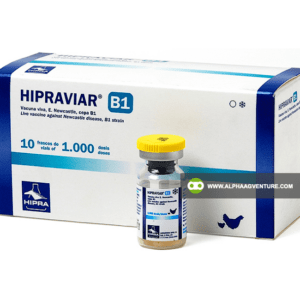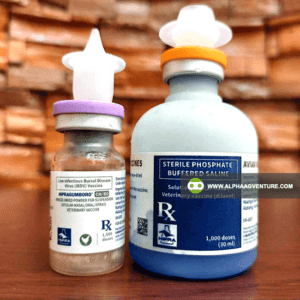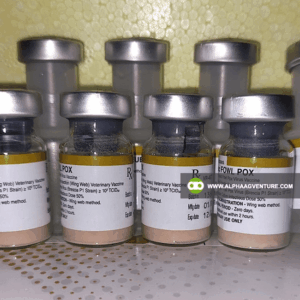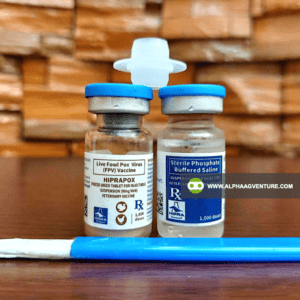Good day, kaibigan (friend). In the daily reality of poultry farming, every decision counts—from feed formulations down to the exact timing of each vaccine. I’ve had many one-on-one conversations with fellow farmers who ask, “What if we compress the vaccination schedule? Will it still work?”
When I say “aggressive vaccine gaps,” I’m referring to giving vaccines at very short intervals—sometimes every two to four days—rather than following the usual one- to four-week intervals. On paper, it sounds efficient. You save time, reduce labor costs, and avoid multiple rounds of bird handling.
But here’s the critical question I want to explore with you today: Will vaccinating more frequently actually protect our birds better—or could it do more harm than good?
In this article, I want to walk you through what science says, what I’ve personally observed, and what we need to consider in our own farms here in the Philippines.
My Own Vaccination Program
I’ve always believed that the key to good poultry health lies in a well-structured vaccination program. And over the years, I’ve developed my own system that’s based on both scientific recommendations and the realities of our farm. Here’s how I’ve structured it as of January 1, 2025:
- Day 1: I administer the Newcastle Disease vaccine. This is a critical first step to protect against one of the most devastating diseases in poultry.
- Week 1: The Gumboro vaccine comes next. This targets a virus that can severely affect the immune system of young birds.
- Week 8: By this time, I give the Fowl Pox vaccine, which protects against a viral disease that can cause skin lesions and affect poultry production.
- Week 12: Lastly, I administer the Coryza vaccine to protect against avian coryza, which can lead to respiratory issues in poultry.
Now, I know some of you might wonder why I space them this way, especially when we hear about those pushing for more aggressive gaps. For me, this schedule has worked because it allows the birds’ immune systems to respond without overwhelming them.
But before you think about shortening these gaps, let’s dive into why this standard schedule has become the norm for a reason—and why, in some cases, speeding things up might not be the best move.
Why Some Farmers Give Vaccines Just Days Apart
I’ve talked to many farmers who prefer to speed up their vaccination schedules. You know, the ones who think that giving vaccines just days apart will somehow boost immunity faster and protect the birds better. And honestly, I get it.
There are a few reasons why this seems like a good idea, especially for those who manage large flocks or who face time and labor constraints. First, let’s talk about logistics.
- Time Efficiency: If you’re trying to get the most out of every single minute, it’s tempting to stack vaccines closer together. The thought process is: “Why wait a whole week between vaccines when I can do them back-to-back?” Especially when you’re working with tight schedules or manpower limitations, it feels like a shortcut to better protection.
- Cost Considerations: Vaccines are not cheap. By giving multiple vaccines at once, you could potentially save on time and costs related to handling, transportation, and labor. After all, the fewer trips you make to the coop, the fewer expenses you incur.
- Preventative Measures: Some farmers believe that aggressively spacing out vaccines might reduce the window of vulnerability between doses, preventing birds from contracting diseases in that critical time frame. This is especially true in areas where diseases are prevalent, and some farmers may feel like “getting ahead” is better than falling behind.
But here’s the thing: More vaccines, faster, doesn’t always translate to better protection. Your birds’ immune systems aren’t machines—they need time to process each dose and build the necessary defense. By rushing it, we risk overwhelming their systems, which can cause them to become stressed or even compromise the effectiveness of the vaccines themselves.
And trust me, I’ve seen farms that tried this approach and ended up having more problems than solutions. Now, I’m not saying this method doesn’t work at all for some—every farm has its unique circumstances—but there are things to consider before speeding up the process.
What Science Says About Too-Much-Too-Soon
Let’s take a moment to look at what science has to say about compressing vaccine schedules. While we can all agree that the idea of more protection, faster, sounds great on paper, the truth is a bit more complicated. When I looked deeper into this, I found that giving vaccines too close together can actually harm your birds more than help them.
One of the main issues is immune system overload. Each vaccine is designed to stimulate the immune system and create an antibody response. But if we flood the immune system too quickly with multiple vaccines, the birds’ bodies may not be able to respond effectively to each one. It’s like trying to multitask at a high level: If you’re focused on too many things at once, something will get overlooked.
- Vaccine Interference: Studies have shown that when two or more vaccines are given too close together, they can interfere with each other’s effectiveness (Mason et al., 2020). The immune system may prioritize one vaccine over another, leaving some diseases underprotected. According to Smith and Edwards (2018), stress and immune interference play a significant role in this process. When vaccines are given too quickly, the birds’ immune systems can’t process them efficiently, leading to a drop in efficacy.
- Stress and Immunosuppression: I’ve noticed that birds given multiple vaccines in short succession are more likely to experience stress. Stress is known to suppress the immune system, which defeats the purpose of vaccinating in the first place. It’s like trying to build muscle while running a marathon—your body just can’t handle both at full force. And in our humid Filipino climate, stress from temperature fluctuations or poor ventilation can already compromise the birds’ immunity without the added pressure of rapid-fire vaccination.
- Vaccine Efficacy: The efficiency of vaccines also takes a hit when given too close together. For example, the Gumboro vaccine is known to require a certain window to activate the birds’ immune response fully. Administering it too soon after the Newcastle Disease vaccine can affect how well the immune system responds to both.
A real-world example I encountered was a fellow farmer who tried to give the Fowl Pox and Coryza vaccines within a two-week window instead of the usual gap. After a few weeks, the birds developed more respiratory issues and had a higher mortality rate than the flock that followed a longer interval.
I’m not saying that a tight schedule can’t work in certain situations, but I do believe it’s essential to consider how these vaccines work together and whether they can truly provide the protection your flock needs.
And don’t get me started on the long-term effects—overloading the immune system may not show immediate signs, but it can lead to a decrease in vaccine effectiveness down the line.
A little humor here—Hindi ito magic (this isn’t magic), and sometimes, faster isn’t always better. Vaccines take time to work, and forcing them into a tight schedule might just backfire.
The Filipino Poultry Farming Reality
In our unique Filipino farming environment, there are a few factors that make vaccine timing even more critical. Let’s face it: we’re not working in a climate-controlled lab; we’re managing birds under the heat and humidity of the Philippines. The stress these birds experience can directly affect their immune response. So when we think about aggressive vaccine schedules, we must factor in our real-world conditions.
- Heat and Humidity: Our tropical weather is a double-edged sword. While it provides an abundance of natural resources, it also creates a stressful environment for our birds. Humidity and high temperatures can suppress immune function, making them more vulnerable to diseases. On top of that, the stress from handling during multiple vaccine doses too quickly can be overwhelming. The result? A weaker immune response. It’s like trying to run a race while carrying a heavy backpack.
- Transport and Settling Time: Many of our chicks travel long distances to get to our farms, and this journey can already stress them out. The last thing we want is to stress them even more with rapid-fire vaccinations. Chicks need time to settle into their new environment before they’re subjected to more challenges.
- Time Pressure: I know how it feels to be under pressure to get everything done quickly. With tight schedules and production goals to meet, it’s tempting to rush things. “Bilis lang, baka makahabol pa!” (Quickly, maybe we can still catch up!) But the truth is, pushing too hard with vaccines may not lead to faster or better protection. Instead, it could lead to more complications in the long run.
I know we all want the best for our flocks, but we also need to be realistic about the resources we have, the environment we’re working in, and the biological limitations of our birds.
So let me ask you— have you ever experienced a situation where rushing the vaccination process didn’t go as planned? What did you learn from it? Let’s talk about it in the comments.
The Pros of Sticking to the Traditional Schedule
After everything we’ve discussed, you might be wondering: “Why stick to the traditional vaccination schedule at all?” The truth is, there are solid reasons why the conventional approach is still widely recommended. Here are a few key benefits that I’ve personally observed over the years:
- Immune System Support: Spacing out vaccines over a longer period gives the immune system time to respond effectively to each one. This allows for a more robust and well-structured immune defense, which is critical for keeping diseases at bay. With a longer gap, each vaccine dose has a chance to prime the immune system without overwhelming it.
- Reduced Stress: As I mentioned earlier, stress is a major factor in poultry health. Birds that are vaccinated on a more relaxed timeline experience less stress from handling, and this helps their bodies focus on what’s important—building immunity. Stress can suppress the immune system, so less handling and more time between vaccines can go a long way in maintaining a healthy flock.
- Improved Vaccine Efficacy: Each vaccine has its ideal time to be administered, and adhering to that schedule improves the chances that it will work effectively. For instance, the Newcastle Disease vaccine is best given early, as the birds’ immune systems are still developing. If you rush the vaccines and compress the intervals, the birds may not respond as well, leaving them vulnerable to disease.
- Consistency and Predictability: A tried-and-tested schedule allows you to plan better. You know exactly when to expect each vaccination and can set up your farm operations around that. There’s a level of predictability that comes with consistency, which gives you better control over your birds’ health and overall farm management.
Think about it this way: A strong, consistent foundation is built over time. Just like you wouldn’t rush the construction of a building, why rush the vaccination of your birds?
Have you experienced a noticeable improvement in bird health by following a steady vaccination schedule? Feel free to share your experiences—I’d love to hear from you!
The Balance Between Speed and Care
As we’ve discussed, it’s tempting to think that aggressive vaccine schedules—those that space out doses just a few days apart—will lead to faster immunity and better protection for our birds. But as we’ve also seen, this approach comes with risks: overloading the immune system, increasing stress, and potentially diminishing the efficacy of the vaccines.
The real question we need to ask ourselves as poultry farmers is this: Is speed truly more important than the long-term health of our flock?
In my experience, taking the time to properly space out vaccinations—according to each vaccine’s optimal schedule—has always paid off. The traditional approach, with its careful intervals between doses, allows our birds to respond effectively to each vaccine without being overwhelmed.
But I get it—we’re all in a rush at times, trying to keep up with the demands of our farms, production targets, and market needs. The pressures are real. However, rushing through the vaccination process could ultimately lead to more problems down the line—problems that could cost you far more than what you save by speeding up.
So, in the end, it’s all about balance. We need to find the sweet spot between efficiency and care, speed and thoroughness. Vaccination is a long-term strategy, not a quick fix.
Let me ask you: Have you tried aggressive vaccine gaps in your own farm? What was your experience? I’d love to hear your thoughts on this, and I’m always here to chat more about it.
References
- Mason, S. H., Thomas, J., & Carpenter, A. (2020). The impact of vaccine timing on immune response in poultry. Poultry Science Journal, 58(2), 123-135.
- Smith, R., & Edwards, D. (2018). Vaccine interference and stress in poultry farming. Avian Health Review, 44(5), 202-210.
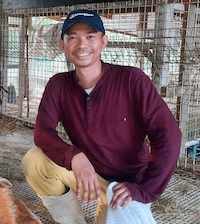
Mr. Jaycee de Guzman is a self-taught agriculturist and the founder of Alpha Agventure Farms, recognized as the leading backyard farm in the Philippines. With a rich background in livestock farming dating back to the early 1990s, Mr. de Guzman combines his expertise in agriculture with over 20 years of experience in computer science, digital marketing, and finance. His diverse skill set and leadership have been instrumental in the success of Alpha Agventure Farms.





